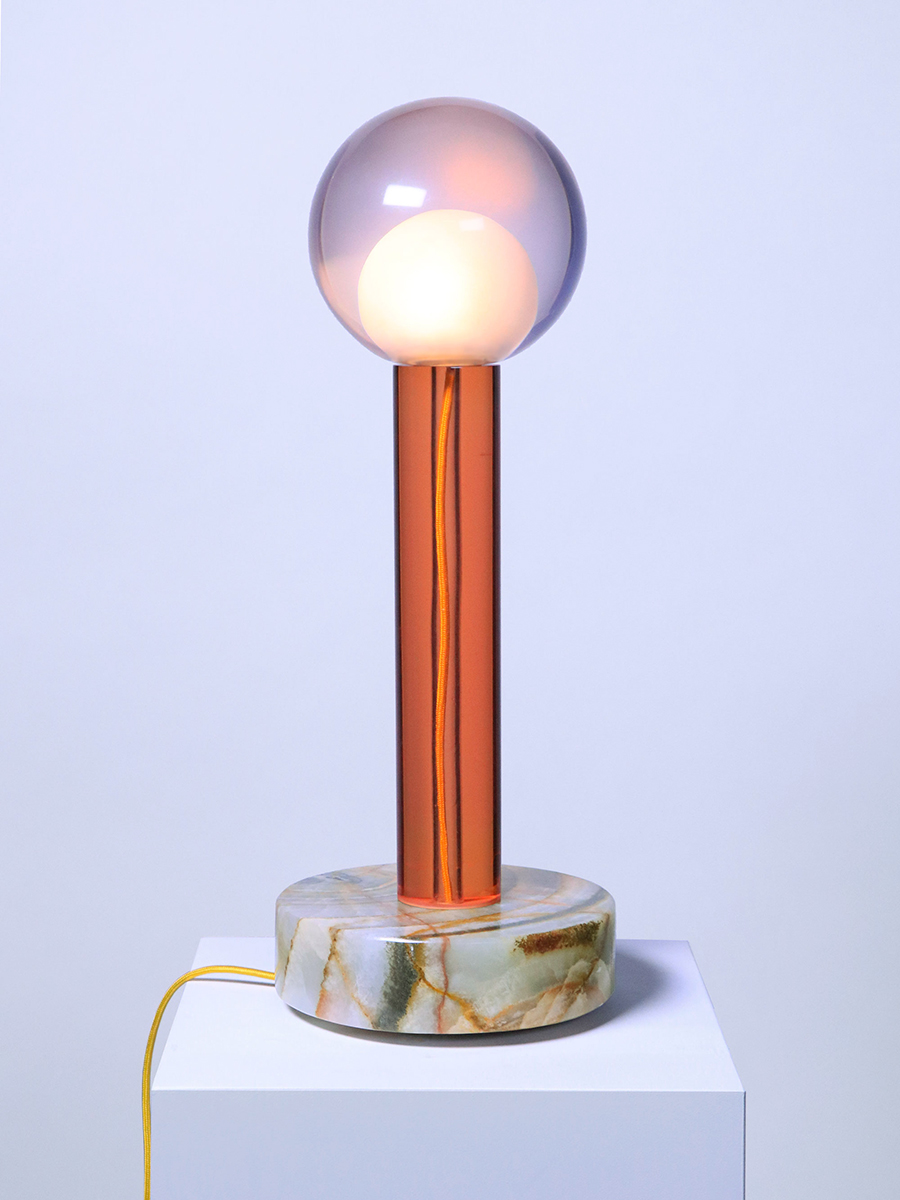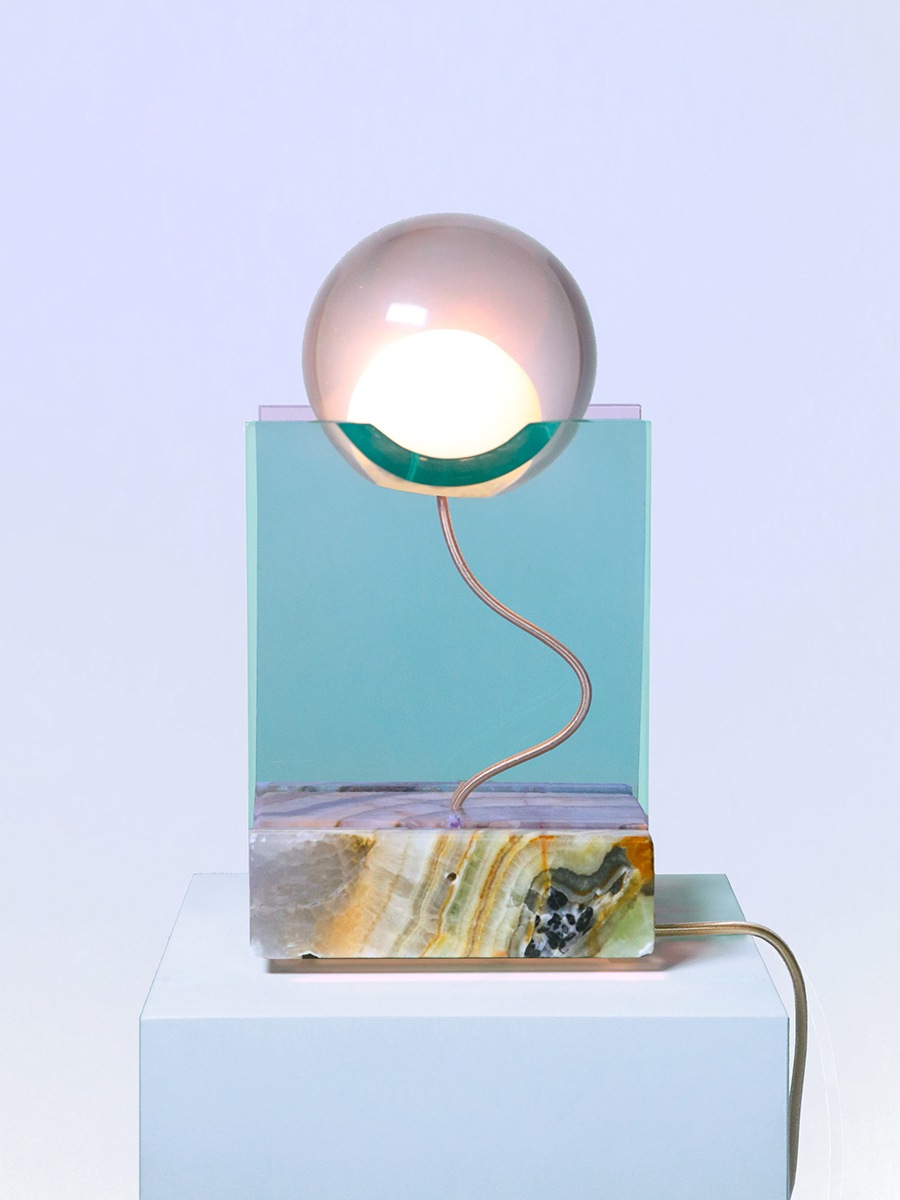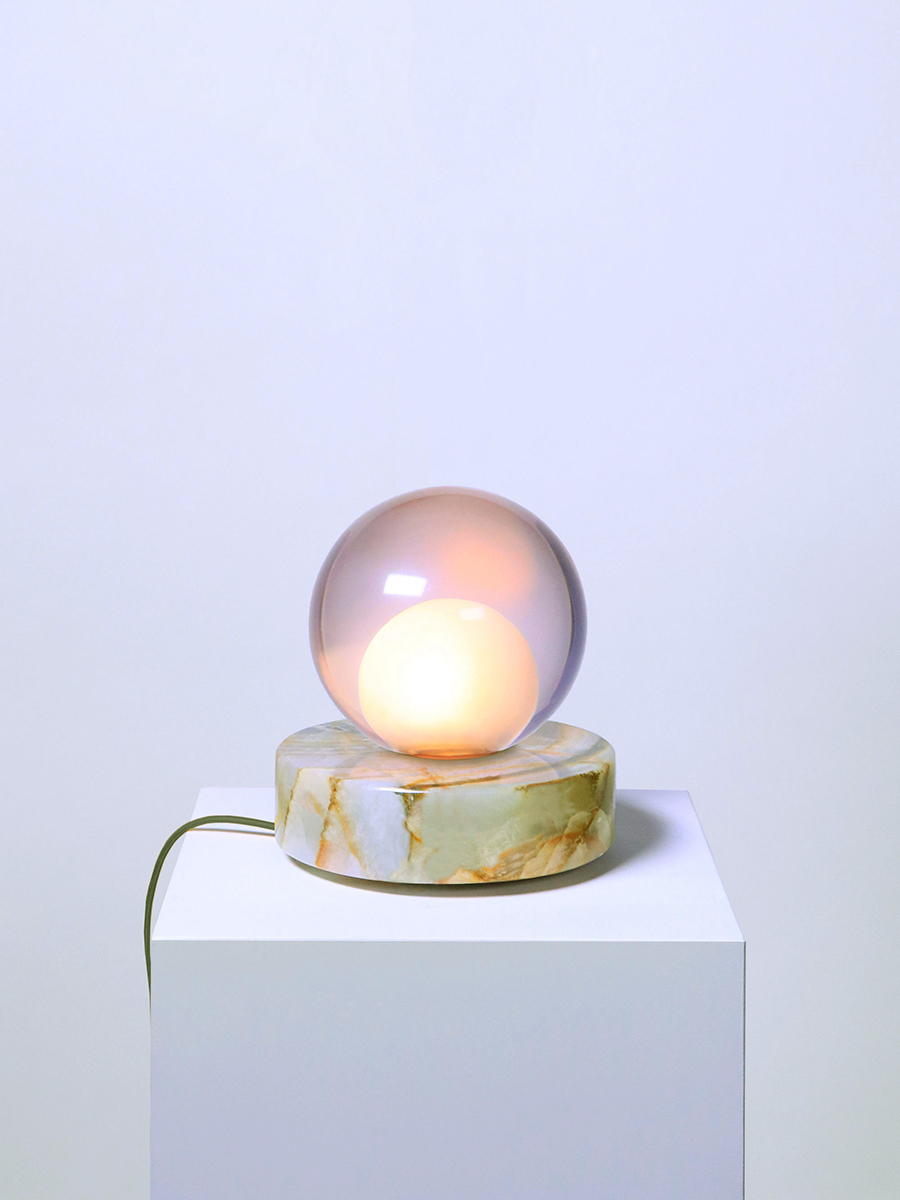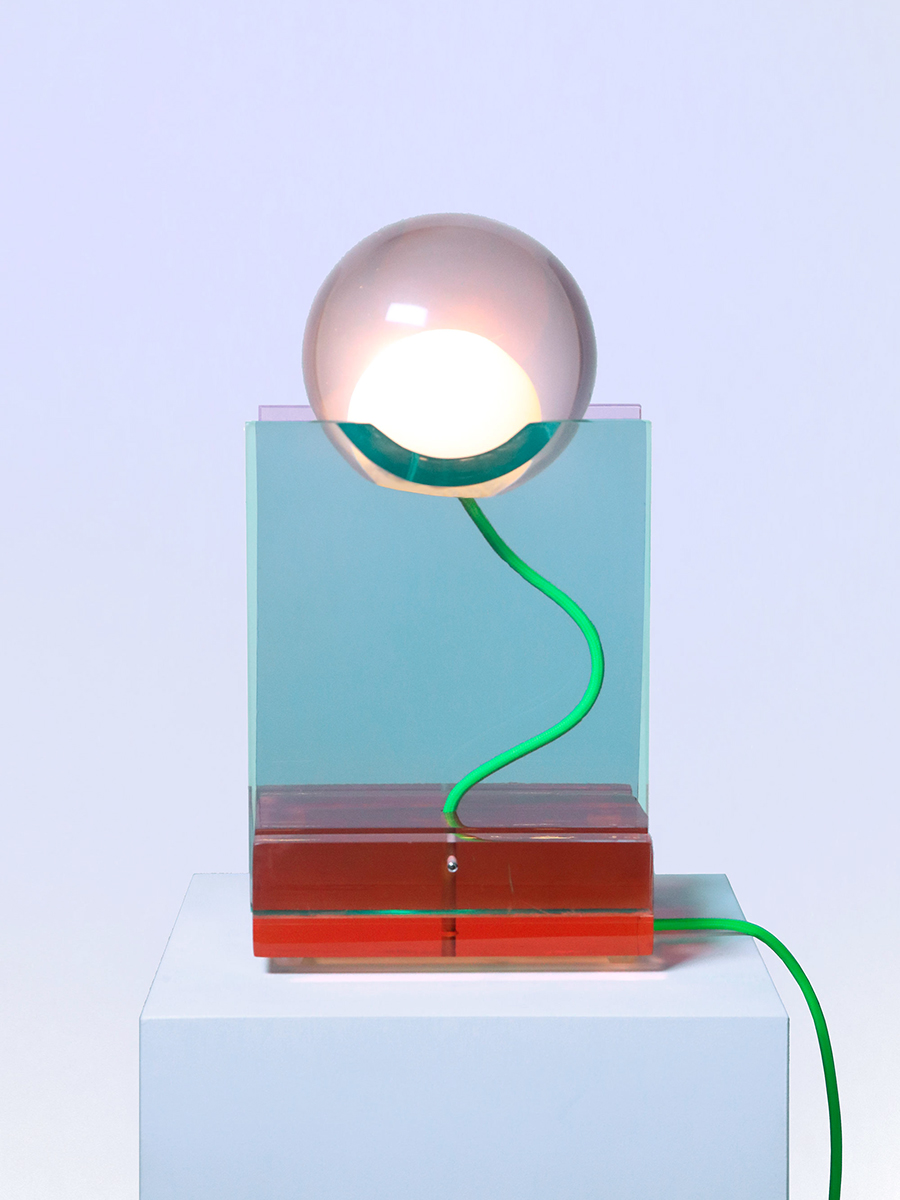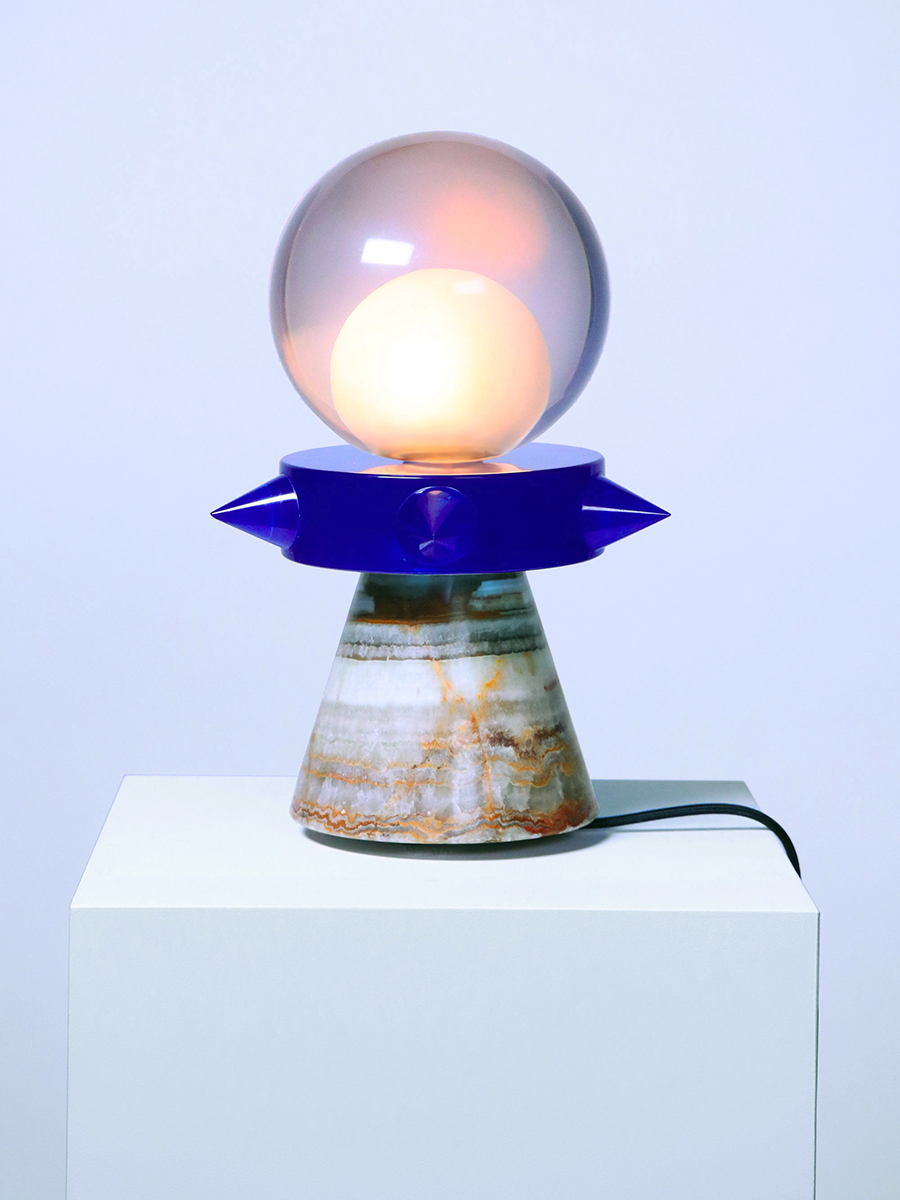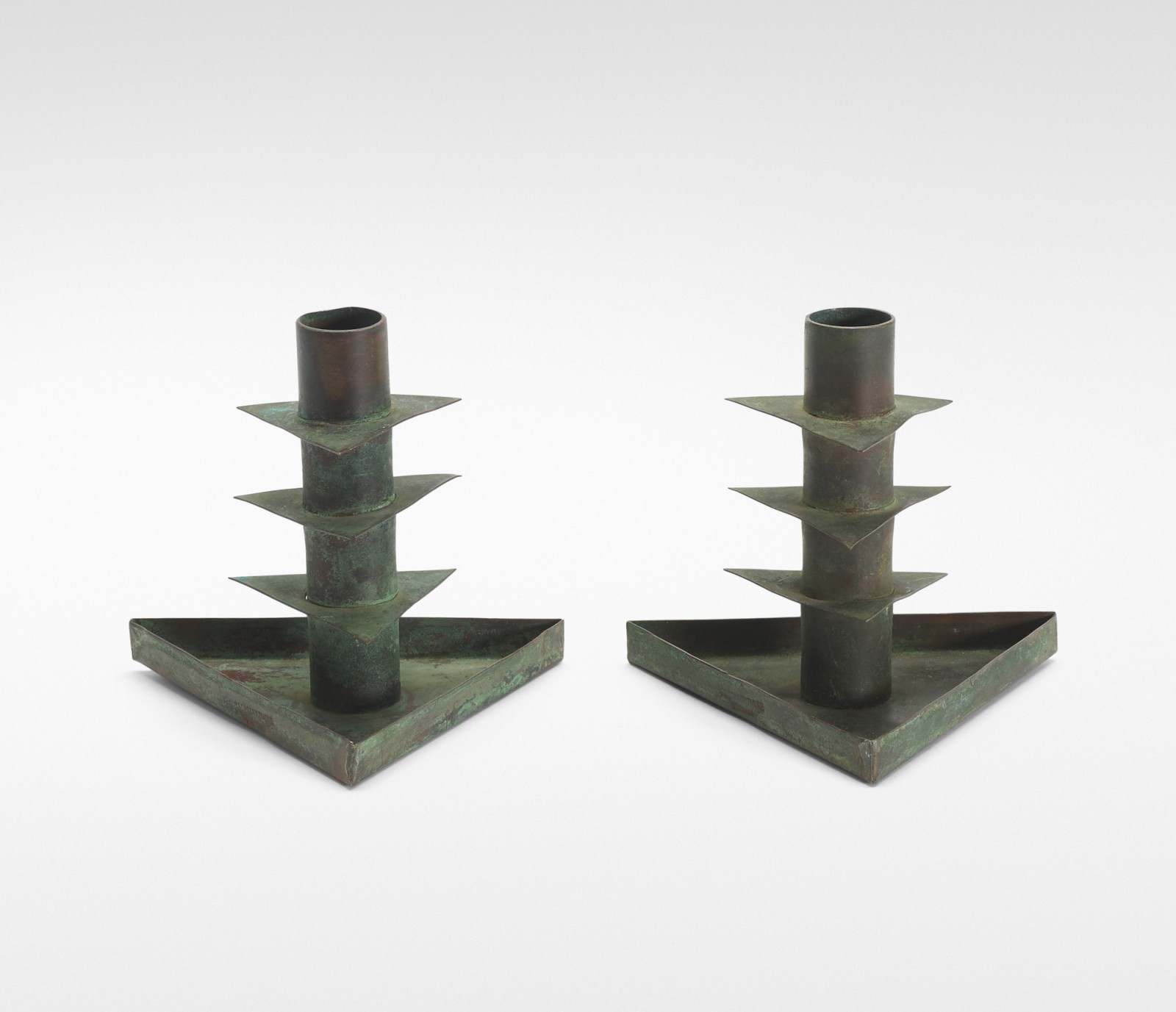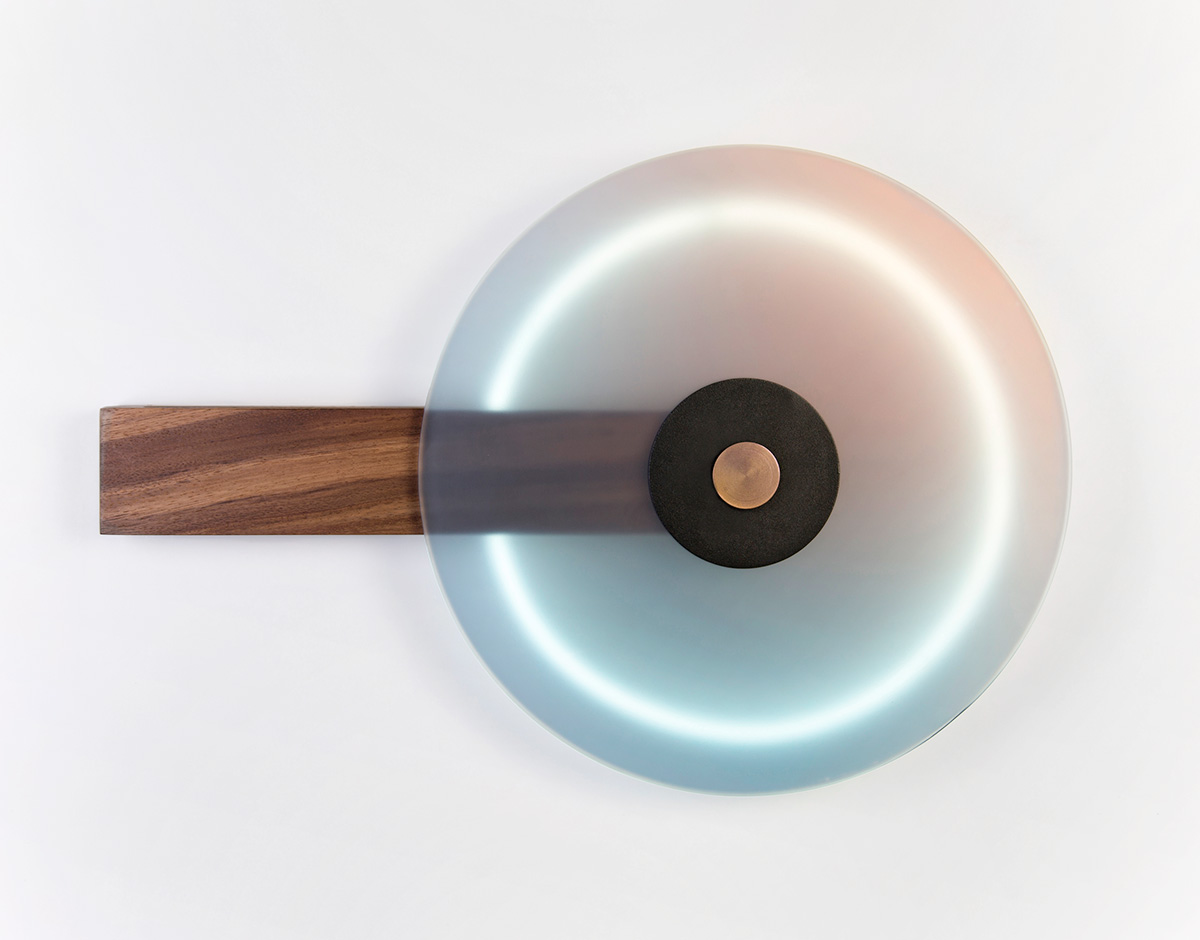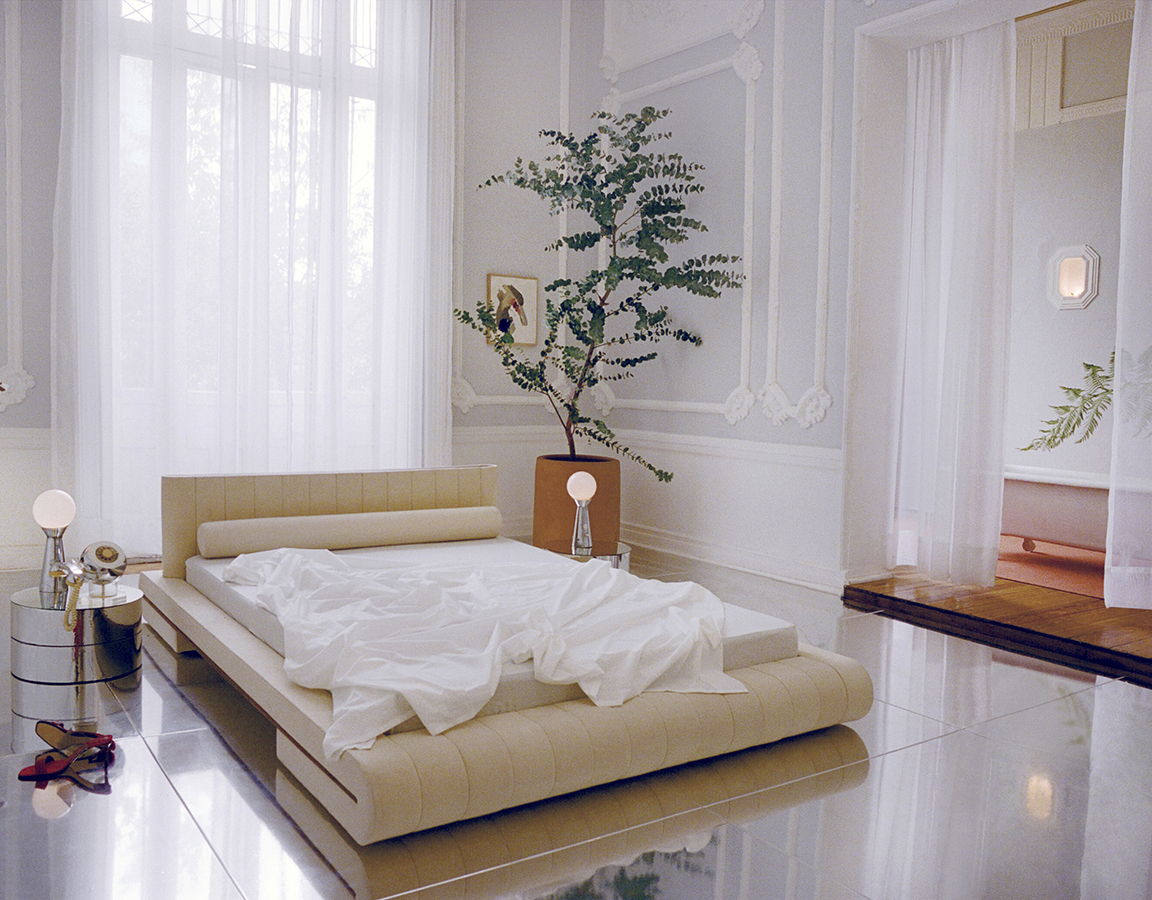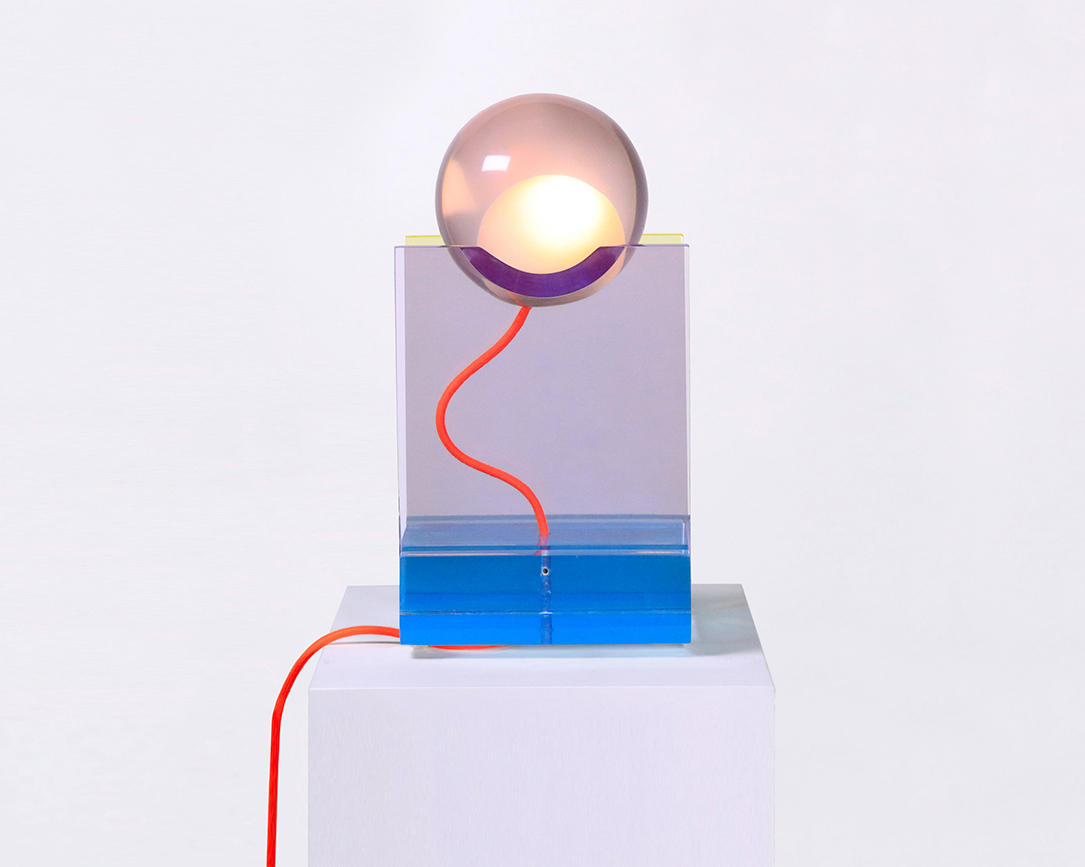
05.16.19
Up and Coming
Colored Resin Meets Onyx in a Series of Textured Lamps Inspired by Mexico
About 40 miles east of Oaxaca City, at the end of a winding road, is Hierve el Agua, the calcified cliffside waterfalls. Formed over the course of thousands of years from mineral waters pushing through karstic limestone, the result is an otherworldly melding of fluid, yellow-green-blue mineral pools alongside hard, opaque earth. When I first encountered the work of Mexico City-born, Belgium-based architect and artist Adrian Cruz, in particular his Elements collection, I found myself thinking of this unique geological site. Blame the contrast of veined onyx and colorful transparent resin.
Cruz’s creations also call to mind the work of iconic Light and Space artists of the 1960s (Peter Alexander or Larry Bell, perhaps) and graphic Memphis Design. These movements certainly reverberate through Cruz’s Elements, but are refracted through the unique lens of Mexico — and Cruz’s own life. Cruz’s grandfather, Chema Chavez, was a pioneer in the use of resins in the 1940s. In addition to commercial items, Chavez developed a special technique to suspend flowers and insects inside a translucent resin. Naturally, these objects captured Cruz’s imagination as a child. He recalls being fascinated by how light seemed to transform within them — even their peculiar smell.
That material fascination is on full display in Elements, Cruz’s colorful collection of imaginative light fixtures. Crystal resin light bulbs float, seemingly suspended, between resin plates, or balance atop slender pillars; some of the lights introduce raw materials like marble and onyx. There, Cruz nods to his geologist father as well as his Mexican heritage — onyx, in particular, has a long history of use in religious objects and adornments in pre-Hispanic Mexico. With its earthy green nuances, Mexican onyx offers a striking play on texture alongside the smooth, precise resin. “For me, the juxtaposition of onyx and resin [explores] the contrast between precious nature and modern man’s creations,” says Cruz.
Cruz splits his time between Belgium, where he lives and where his studio is headquartered, and Mexico, where his Elements are fabricated, and his work stands as a testament to his life and spirit of curiosity. Trained as an architect in Florence, his inspirations, he says, are a unique mashup of the Art Deco and European Rationalist styles found in Mexico City, pre-Hispanic Mexican culture and folklore, Italian Palladian villas, Renaissance-era structures and floor plans, and even the biology of flowers (one lamp, called Tallo, is named after Cruz’s mother, a biologist). Each piece is one-of-a-kind, fabricated by his uncles and cousins, who continue the family tradition set forth by Chavez. Though Cruz never met his grandfather, his work brings him closer all the time: “I feel a connection with him through the objects he left, and now with the ones I’m creating,” he says.
